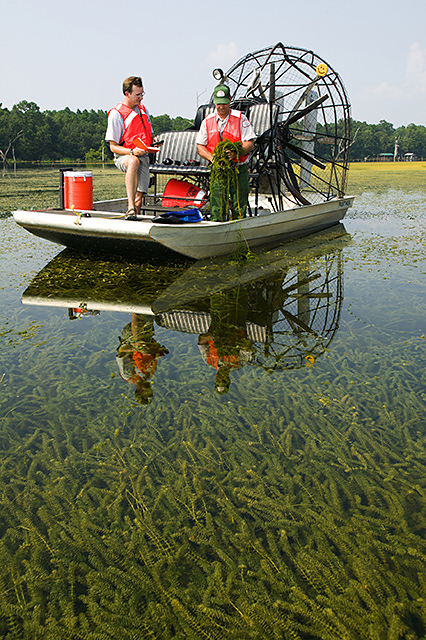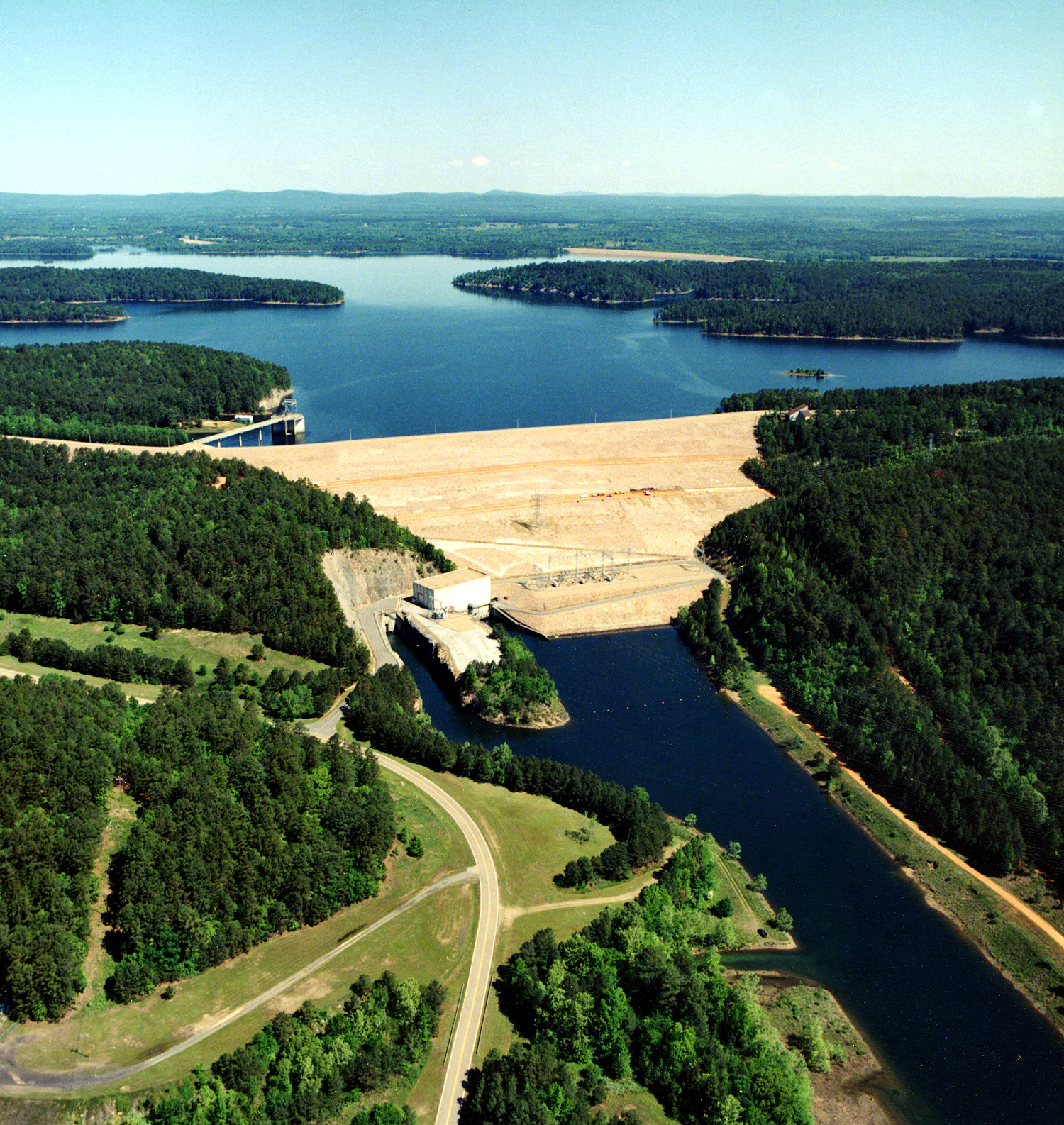There's something in the water, and it's killing America's national bird
Cyanobacteria are eating away at eagles' brains
dave vichich on Unsplash.
In the winter of 1994, at DeGray Lake in Arkansas, 29 bald eagles died of unknown causes. Two years later, another 26 dead or dying eagles were found in the same area. Blood counts, chemical tests, and postmortem tissue examinations of the birds appeared normal, with no significant levels of toxic chemicals and no indication of bacterial or viral infections. Apart from being dead, the eagles appeared in good health.
What caused so many eagles to die so suddenly? Light microscopy finally provided a clue – all examined eagles showed widespread lesions in the white matter, or myelin, of their brains and spinal cords. These lesions took on the appearance of empty cavities, leading the researchers to name this disease Avian Vacuolar Myelinopathy (AVM). The cause of AVM remained unknown.
For over twenty years, AVM spread across the southeastern United States, affecting birds from American coots to red-tailed hawks. None of the affected birds showed signs of compounds or pathogens known to cause myelinopathy. But, the cases all had a few things in common. The mysterious deaths occurred during the fall or winter, near bodies of water colonized by the non-native aquatic plant waterthyme, Hydrilla verticillata. Further study showed that the surfaces of H. verticillata leaves were covered by a previously undiscovered cyanobacterium, Aetokthonos hydrillicola.

Army Corps of Engineers collect herbicide-resistant hydrilla from Lake Seminole in northern Florida.
USDA via Wikimedia Commons.
Did this plant or cyanobacterium somehow cause these deaths? Researchers at the University of Georgia and Martin Luther University of Halle-Wittenberg in Germany thought so, but they weren't sure how. They collected samples of the aquatic plant from affected reservoirs, cultivated it in the lab, and fed it to chickens.
The chickens did not develop AVM.
Thinking that maybe the plant and cyanobacterium somehow grew differently in lakes, they collected additional samples from lakes and visualized them using a mass spectrometry imaging technique to look at the distribution of small molecules. Using this method, the researchers found the presence of a novel metabolite only where the cyanobacterial colonies grew upon the plant's leaves.
The structure of this compound, aetokthonotoxin, provided a clue as to why only natural specimens produced this metabolite. The compound had five bromine atoms, but the standard cultivation medium used for H. verticillata and A. hydrillicola did not contain bromine, which is not typically added to media since it's only needed by most lifeforms in trace amounts. When the scientists supplemented the medium with a bromine compound, the metabolite formed. Furthermore, formation of aetokthonotoxin skyrocketed when the temperature dropped, like during fall and winter when bird deaths usually occurred.

DeGray Dam and DeGray Lake (back) on the Caddo River in Hot Spring County, Arkansas.
US Army Corps of Engineers on Wikimedia Commons
With the potential toxin in hand, the researchers still had to establish that it caused the bird deaths. When they studied H. verticillata from lakes where AVM was not detected, they did not find any of the metabolite, but tissues from dead AVM birds contained this compound. Bromine concentrations on H. verticillata leaves from affected lakes were as much as 1000-fold higher than in the lake water. The scientists sequenced the entire genome of A. hydrillicola and looked for genes that might explain its ability to create this compound. They found a gene cluster not previously found in any other organism, and produced one of the enzymes encoded by a gene in this cluster. When they added this enzyme, they found that a brominated compound partially matching the structure of the potential toxin was produced. With enough evidence pointing to this metabolite, they named it aetokthonotoxin, or AETX, from the Greek for "poison that kills the eagle."
However, the researchers still needed to catch the murderer in action. They fed AETX isolated from assemblages of A. hydrillicola and H. verticillata to animals including water fleas, nematodes, zebrafish, and chickens. AETX killed them all. Chickens fed either this assemblage or purified AETX all developed cavities in the white matter of their brains just like wild birds with AVM. Control chickens fed only a solvent without AETX did not develop these cavities.
This evidence was the smoking gun. The mass mortalities had been caused by a deadly combination of a non-native aquatic plant, H. verticillata, upon which the cyanobacterium A. hydrillicola lives. When bromine concentrations are low, this arrangement is relatively benign, but the duo turns deadly when bromine increases, possibly due to pollution from pesticides, power plants, or gasoline. H. verticillata accumulates bromine on its surfaces, and A. hydrillicola, in the presence of bromine, produces the toxin AETX. Birds and other animals feeding on this plant accumulate AETX in their bodies, and affected waterfowl may then be eaten by eagles and other birds of prey. After ingesting a lethal amount of AETX, these birds develop holes in their brain matter, and eventually die.
Native to India, H. verticillata was first sold as an aquarium plant, although it is now classified as a federally prohibited invasive and its sale is banned in the United States. However, it is already widespread in 33 states in the U.S. and across all continents except Antarctica. Currently, several methods of controlling its spread involve the use of bromine-containing herbicides, but this may pose a danger as bromine increases the production of AETX.
AETX is far from the first cyanobacterial toxin to be discovered. In fact, known cyanotoxins pose many health hazards if humans or pets ingest, inhale, or otherwise come into contact with them, and can cause gastrointestinal, liver, skin, and neural symptoms. Many affected water bodies, including DeGray Lake, are used by people for fishing, swimming, boating, and as sources of drinking water. AETX accumulates in lipids, may remain in the body for a period of time, transfers up the food chain, and has demonstrated lethality in a wide variety of animals. How does AETX affect humans? We don't yet know. More research is required to fully understand the effects of AETX upon entire ecosystems and its longer-term effects to both wildlife and human health.
Peer Commentary
Feedback and follow-up from other members of our community
Margaux Lopez
Astronomy
Vera C. Rubin Observatory
It is absolutely fascinating to see how complicated the relationship between all these species gets, I’m impressed that scientists were eventually able to unravel this mystery. The very specific combination of a particular plant with a particular bacterium at a particular time of year that gets ingested by various critters and eventually makes its way up the food chain until we notice mass mortalities is…a lot. More research is of course required, but do they have ideas of the potential wider-reaching effects of this cyanobacterial toxin? How do scientists research how a toxin like this could affect humans, are there similar ones that have already been studied?
Thank you for these comments! This particular toxin was recently identified, so literature on its effects is sparse at the moment. Understanding the wider-reaching effects, particularly on humans, requires determining whether and how trophic transfer might occur. I looked into this very briefly and there’s some preliminary research that indicates eating the muscles or flesh of affected fish and birds (with VM symptoms) might not transfer the toxin, but eating the brains might. Since people don’t usually eat brains, we might be pretty safe if that’s the case.
Other important considerations are bioaccumulation and biomagnification. If the toxin sticks around for a long time, small repeated exposures such as from swimming, etc. might build up over time. And if it sticks around for a long time, there might be biomagnification up the food chain, causing “apex predators” like ourselves to be at higher risk. It’s not clear right now what the lifetime of AETX in the body is, or if it can biomagnify up the food chain.
More animal research is probably a good way to understand this, such as by feeding mice or other mammals the toxin and checking for the presence of the toxin in different body tissues over time (but these trials would be time-consuming to do). There are other cyanobacterial toxins, including neurotoxins, that pose risks to humans and animals (a reason why people and pets are warned against swimming during algal blooms!) but to my understanding this toxin is unique in its structure compared to known toxins, so it could have very different properties.
I’m pretty proud of that sentence :)
Derek Smith
University of Michigan
Hi Irene,
Great job covering this cool study! I’m always amazed by the impact that cyanobacteria have on the environment and humans (good and bad).
I was wondering if you happened to come across any literature or data about AETX and Aetokthonos on other aquatic plants in other areas apart from the southern US? I learned from talking to Susan Wilde, one of the study PIs, that Aetokthonos has been found on other aquatic plant species, some of which are now spreading into northern states because they have a wider range of temperatures that they tolerate. There’s no evidence of Aetokthonos spreading with the plants yet, but my hunch is that this might be because nobody is looking for this cyanobacterium in environmental surveys yet, since this particular toxin and cyanobacterium are so new to science. Have your heard of any unexplained northern bird fatalities that might fit the bill for AVM, or do you know of any efforts to look for Aetokthonos in northern states?
Thank you Derek for your commentary! The invasive plant has been found in many regions of the US (hydrilla: Hydrilla verticillata (Hydrocharitales: Hydrocharitaceae)) beyond just the southeastern US, and they are spreading to more northern regions. In addition to Hydrilla, Aetokthonos has been previously found on other invasive plants, and these are also present in many northern areas such as the Connecticut River, in Washington state, etc. I didn’t find any reports of the cyanobacterium besides in the SE US, but I agree with you that this is probably because they aren’t looking for it yet.
Cases of AVM have been confirmed in other SE US states, but so far none in northern states. From the CT report and others, wildlife biologists in northern areas are aware of it, but there hasn’t been a mass mortality event that fits the bill. This kind of mass mortality requires some specific circumstances (the invasive plant, the cyanobacterium, elevated bromide, local wildlife that consumes the plants that then dies mysteriously), so it’s possible that these factors haven’t come together yet even though the plant and cyanobacterium are present.
Mihaela Bozukova
Bioinformatics, Molecular Biology
Max Planck Institute for Biology of Ageing
And isn’t it ironic how human attempts to keep the growth of the exotic plant in check through herbicides actually fuel the toxin production by supplying the required bromine? This is a great example of how dangerous perturbing delicate ecosystems can be! I’m curious to see future research on the potential biomagnification up the food chain.